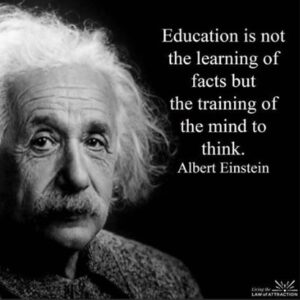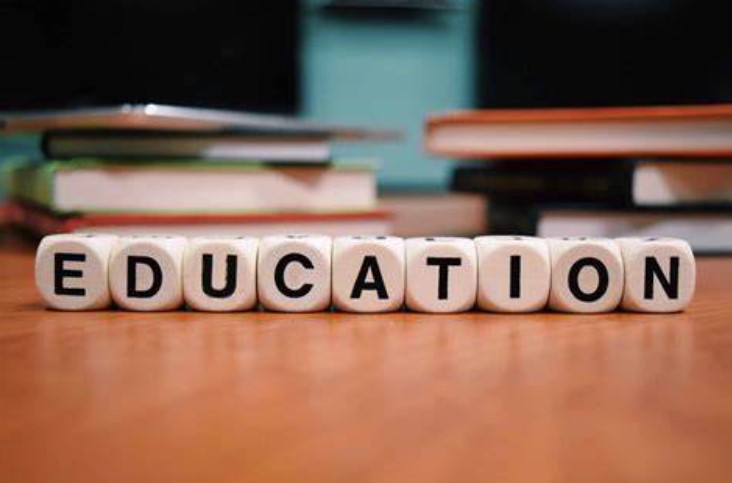Rethinking Education: New Approaches for Success-2025
Introduction to Contemporary Education
Education is evolving to meet the demands of a rapidly changing world. With advancements in technology and a deeper understanding of diverse learning needs, the traditional classroom model is giving way to more innovative approaches. These modern educational strategies emphasize flexibility, engagement, and inclusivity, aiming to foster a more effective learning environment for all students.
One major shift in contemporary education is the move towards student-centered learning. This approach focuses on the needs, interests, and abilities of each student, rather than adhering to a one-size-fits-all curriculum. By personalizing education, teachers can better address individual strengths and challenges, making learning more relevant and engaging for students. This shift requires educators to be more adaptable and creative in their teaching methods, utilizing a variety of resources to meet the diverse needs of their classrooms.
Another significant trend is the increased use of technology to enhance learning experiences. Digital tools offer opportunities for interactive and immersive learning that were previously unimaginable. Virtual reality can transport students to different times and places, providing context and deeper understanding of subjects like history and geography. Online collaboration platforms enable students to work together on projects regardless of their physical location, fostering teamwork and communication skills.

The integration of technology also supports the development of critical digital literacy skills. As the world becomes more reliant on digital platforms, it is essential for students to learn how to navigate and utilize these tools effectively. Schools are incorporating lessons on digital citizenship, teaching students how to use technology responsibly and ethically.
Contemporary education also places a strong emphasis on developing critical thinking and problem-solving abilities. Rather than simply memorizing facts, students are encouraged to analyze information, question assumptions, and develop their own ideas. This approach prepares them for the complexities of the modern workforce, where adaptability and innovation are highly valued.
Collaborative learning is another cornerstone of modern education. Group projects and peer-to-peer interactions help students develop social skills and learn from different perspectives. This collaborative approach mirrors real-world scenarios, where teamwork and cooperation are often key to success.
Moreover, contemporary education recognizes the importance of emotional and social development. Programs that support students’ mental health and well-being are increasingly integrated into the curriculum. These initiatives aim to create a supportive environment where students feel safe and valued, ultimately enhancing their ability to learn and thrive.
In summary, contemporary education is characterized by its focus on personalization, technological integration, critical thinking, collaboration, and holistic development. By embracing these new approaches, educators can better prepare students for the challenges and opportunities of the future.
Tailored Learning Pathways
Tailored learning pathways represent a significant advancement in education, offering students customized experiences that align with their unique interests, strengths, and learning styles. This personalized approach goes beyond traditional, standardized methods, ensuring that each student receives the attention and resources they need to thrive academically.
Technology is a key enabler of tailored learning. Adaptive learning platforms and educational apps assess a student’s progress and adjust the curriculum to fit their individual needs. For example, platforms like Khan Academy and IXL provide exercises and materials that respond to the learner’s performance, delivering challenges that are neither too easy nor too difficult. This responsiveness helps maintain student engagement and promotes a deeper understanding of the subject matter.
Artificial intelligence (AI) plays a crucial role in this personalization. AI-driven tutoring systems offer real-time feedback and personalized assistance, helping students grasp complex concepts more effectively. These systems can identify areas where a student is struggling and provide targeted support to address those specific issues. This not only improves comprehension but also boosts the student’s confidence and motivation.
Tailored learning pathways also consider different learning modalities. Some students may excel through visual aids, while others might benefit more from auditory or kinesthetic methods. By incorporating a variety of teaching tools and techniques, educators can cater to these diverse preferences. For instance, visual learners might benefit from interactive videos and infographics, whereas hands-on learners might find simulations and physical models more effective.
In addition to leveraging technology, tailored learning pathways often involve flexible scheduling and pacing. Students can progress through the material at their own speed, allowing those who grasp concepts quickly to move ahead while providing extra time and support for those who need it. This flexibility reduces the pressure associated with traditional classroom pacing and helps prevent students from feeling overwhelmed or left behind.
Collaborative efforts between teachers, parents, and students are essential in developing these personalized pathways. Regular communication and feedback ensure that the learning plan remains relevant and effective. Teachers can use data from assessments and observations to make informed adjustments, while parents can provide insights into their child’s interests and learning habits. This partnership fosters a supportive learning environment that extends beyond the classroom.
Furthermore, tailored learning pathways can integrate students’ interests into the curriculum, making education more relevant and engaging. For example, a student interested in engineering might be given projects that involve building and design, linking academic concepts to real-world applications. This approach not only keeps students motivated but also helps them see the practical value of their education.
Overall, tailored learning pathways empower students to take control of their educational journey. By recognizing and addressing the unique needs of each learner, this approach promotes a more inclusive and effective educational experience.
Experiential Learning Through Projects
Experiential learning has emerged as a powerful way to engage students through practical, hands-on activities. This approach, often referred to as project-based learning, allows students to apply their knowledge to real-life scenarios, thereby enhancing critical thinking and problem-solving abilities. Projects can be diverse, covering areas such as science, art, community service, and even entrepreneurship.
One compelling example comes from a high school in California where students participated in a sustainability initiative. They designed and constructed a community garden, integrating lessons from environmental science, biology, and even economics. This project not only deepened their academic understanding but also fostered important life skills like teamwork and effective communication.
Another example can be found in a middle school in New York, which implemented a robotics program. Students worked in teams to build and program robots, drawing from their knowledge of mathematics, engineering, and computer science. This kind of project teaches them to troubleshoot issues, iterate on designs, and collaborate with peers—skills that are invaluable in both academic and professional settings.
The value of experiential learning extends beyond subject-specific knowledge. It cultivates a sense of responsibility and ownership among students. When learners see the tangible results of their efforts, their engagement and motivation often increase. This heightened interest can lead to a more profound and lasting understanding of the material.
Teachers play a crucial role in facilitating these projects. Rather than acting as the sole source of information, educators guide and mentor students through the process, providing the support and resources needed to succeed. This shift in the teacher’s role from lecturer to facilitator helps create a more dynamic and interactive classroom environment.
Community involvement can also enhance project-based learning. Schools can partner with local businesses, non-profits, and other organizations to provide students with real-world challenges. For example, a partnership with a local hospital could lead to a project where students develop wellness programs or health-related apps. Such collaborations offer students valuable insights into potential career paths and the practical applications of their studies.
Parental involvement is another key factor. When parents are engaged in their children’s projects, it reinforces the value of education and can lead to more meaningful learning experiences. Schools can facilitate this by organizing events where students present their projects to parents and the community, creating an opportunity for broader feedback and recognition.
In summary, experiential learning through projects offers a dynamic and engaging way for students to connect their academic knowledge with real-world applications. It fosters a deeper understanding of subjects, while also developing essential life skills such as teamwork, communication, and critical thinking.
The Impact of Technology on Education
Technology has significantly altered the landscape of education, bringing new opportunities and challenges. The availability of digital tools has enabled more interactive and engaging learning experiences. Interactive whiteboards, for example, have replaced traditional chalkboards, offering dynamic ways to present information and involve students in lessons. Virtual reality can transport students to distant places and historical events, providing immersive experiences that enhance understanding and retention.
Online collaboration platforms have made it easier for students to work together on projects, regardless of their physical location. This fosters not only teamwork but also essential communication skills. Additionally, educational apps and platforms allow for personalized learning, where students can progress at their own pace and receive instant feedback on their performance.
Despite these advancements, integrating technology in education is not without its challenges. One major concern is digital equity. Not all students have access to the necessary devices or reliable internet connections, creating a gap in educational opportunities. Schools and policymakers need to address this disparity to ensure that all students can benefit from technological advancements.
Privacy is another critical issue. With the increased use of online platforms, protecting students’ personal information has become paramount. Schools must implement robust data protection measures and educate students about online privacy and security.
The potential for distraction is also a concern. With the vast amount of information and entertainment available online, keeping students focused can be challenging. Educators need to find a balance between utilizing digital tools and maintaining traditional learning methods to provide a well-rounded educational experience.
To effectively integrate technology, teachers need adequate training and support. Professional development programs can help educators become proficient in using digital tools and incorporate them seamlessly into their teaching strategies. Schools can also develop guidelines and best practices for tech-based learning to maximize its benefits while minimizing its drawbacks.
The use of technology in education also brings the need for digital citizenship education. Students must learn how to use technology responsibly, understand the ethical implications of their online actions, and develop critical thinking skills to navigate the digital world.
Nurturing Emotional and Social Growth
Education is not solely about academic success; it also involves developing emotional and social skills that are crucial for a well-rounded life. Emotional intelligence, the ability to understand and manage one’s own emotions as well as those of others, is becoming a central focus in modern education. This skill set is important for personal well-being and is highly valued in professional environments.
Schools are increasingly incorporating programs that support social and emotional development. Peer mentoring, where older students guide and support younger ones, is a valuable tool in this area. Such initiatives foster a sense of community and belonging, helping students feel more connected and less isolated. Conflict resolution workshops teach students how to handle disagreements constructively, promoting a more harmonious school environment.
Collaborative projects are another effective way to nurture social skills. When students work together towards a common goal, they learn to communicate, negotiate, and compromise. These experiences mirror real-world situations and prepare students for future interactions in both personal and professional settings.

Mindfulness and stress management programs are also gaining traction in schools. These initiatives teach students techniques for managing stress and maintaining focus, which can be especially beneficial during exam periods or other high-pressure situations. Practicing mindfulness helps students stay present and engaged, improving both their emotional well-being and academic performance.
Teachers play a pivotal role in fostering a supportive classroom atmosphere. By showing empathy, actively listening, and modeling positive behavior, educators can create an environment where students feel safe to express their emotions and take risks in their learning. Open lines of communication between teachers and students are essential for building trust and mutual respect.
Parental involvement is another key factor in supporting emotional and social growth. Schools can engage parents through workshops and meetings, providing them with strategies to reinforce these skills at home. When parents and schools work together, students receive consistent messages about the importance of emotional intelligence and social skills.
Extracurricular activities also offer opportunities for emotional and social development. Participation in sports, arts, and clubs allows students to explore their interests and build relationships outside the classroom. These activities often require teamwork, discipline, and resilience, further enhancing students’ social and emotional capabilities.
In summary, nurturing emotional and social growth is a vital component of contemporary education. By integrating programs and activities that promote these skills, schools can help students become well-rounded individuals capable of thriving in various aspects of life.



